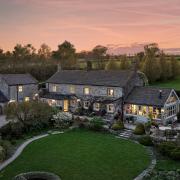People have been living at Settle on the banks of the Ribble since at least Anglo-Saxon times and down the years it has had a long list of incarnations from isolated farming community via market place, quarrying centre to mill town and now it has reinvented itself as a major tourist hub for the Yorkshire Dales. In recent centuries much of its wealth derived from wool and cotton though these days you will find them spinning a very different kind of yarn as it puts itself on the world story-telling map but there is plenty to draw visitors to its stately market square and streets all year round.
1. Tall Tales
Telling stories is one of Man’s oldest activities, going back to long dark nights around the communal fire and crops up in almost every culture. The Settle Storytelling Festival has quickly established itself as a major event of national and even international importance. Although just five years old, it draws tellers – and listeners – from around the world. This year’s performers include American Jerry Harmon, who has performed alongside the likes of pneumatic country and western singer Dolly Parton.
With more than 40 events spread over the festival weekend the organisers plan to have something for everyone, from bedtime stories for children, who are invited to turn up in their pyjamas and to bring their teddy bears, through to tales to enthral even the most jaded adults. And for those who want to have a go themselves there are storytelling workshops too.
This year’s festival runs from October 10-12 and full details can be found on www.settlestories.org.uk
2. All Aboard
These days the town is inextricably linked with the Settle-Carlisle railway line, which is a great way to arrive in town. Today the line, which weaves its way through the Yorkshire Dales National Park and on into Cumbria is so popular with visitors that it is hard to believe that only a couple of decades ago that it was threatened with permanent closure. This year the town, along with rail campaigners across the country, have been celebrating the 20th anniversary of its reprieve.
Back in the 1980s it was said that the quarter-mile-long Ribblehead viaduct that still carries the line more than 100ft above the Ribble on 25 huge stone arches was crumbling and would cost too much to repair, But in the face of protests the line was given a new lease of life and today it is a popular attraction in its own right and still part of the national rail network.
3. Tiniest Gallery
Most galleries boast of their vast halls and huge collections but Settle proudly claims the world’s smallest. It fits, quite literally, into a telephone box. When the traditional red box in Upper Settle was decommissioned in early 2009 it was bought by the town council who then had to decide what to do with it and so The Gallery on the Green was born.
Since then it has staged countless exhibitions by artists from the surrounding area and across the country, all captivated by the idea of showing their work in a unique venue. It’s a bit of hike up there from the town centre but there is no need to check opening times. As well as believing they have the smallest gallery the town reckons it is the only one that never closes. Ever.
4. Step Out Shopping
Settle was given its market by King Henry III in 1249 and it is still being held every Tuesday, making it a focal point for shoppers. The town has also been spared the attentions of most of the large chains, though there is a supermarket tucked away behind the High Street. But for the most part the town centre is still the province of small local retailers many of whose names have been over the same doors for generations. And while it may not have a candlestick maker to go with the butchers and bakers it does still have one of the last clog makers at Nelson’s in Duke Street, where they can make you bespoke boots and shoes from any period.
5. Great Outdoors
Walkers and cavers have long congregated around Settle to hike in the Three Peak country and explore its potholes. They have now been joined by rock climbers whose sport is enjoying a renaissance in the area. But the biggest group of newcomers is cyclists, both on and off road. The newly-created 205-mile Pennine Bridleway passes through the town as does the 170-mile coast-coast Way of the Roses ride but there are lots of shorter circuits. The town is also the start and finish of the new Wainwright Pennine Journey which retraces guidebook writer Alfred Wainwright’s pre-war walk to Hadrian’s Wall and back.



























